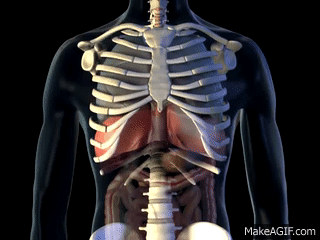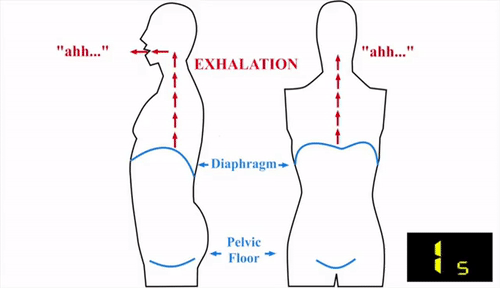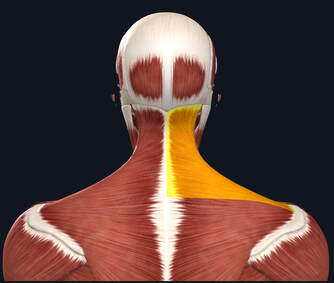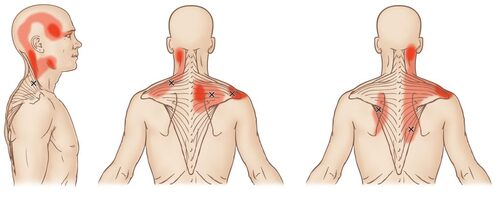|
In recent events, it seems like the world has been turned upside down. For most people, it has been a huge disruption to our everyday lives. We're all anxiously holding our breaths - just waiting for that glorious day that we can all be with our friends again. Don't do that. Instead, just breathe. We will all get through this together. But just for a moment, I'd like to talk to a very important, misunderstood and neglected muscle, THE DIAPHRAGM. You're probably familiar with "the core" and immediately think of the abdominal muscles. Maybe even the back muscles too. The diaphragm is a lesser-known muscle, but is essential to breathing as well as core stability. It is a large, broad, umbrella/dome-shaped muscle that separates your thoracic cavity (lungs, heart), from your abdominal cavity (liver, spleen, intestines, stomach, etc.) How does it work? When the diaphragm contracts, it flattens out and lowers down towards the abdominal cavity, allowing the lungs to fill in the empty space as more air is drawn in - like a vacuum. Then other muscles, such as the intercostals and obliques, push the air back out when you exhale. Of course, muscles seldom work in isolation. So realize that while we are talking about one muscle today, many many others are working in tandem every breath you take (cue the Police music) For you musicians, here it is in practice. Start viewing at 7:51 I would recommend starting to view the video at 7:51 to see the diaphragm working in real time. If you have a moment, it's fascinating to watch how the body and muscles interact while playing. It's worth your time. fMRI's are my fav. (I know, I know.... so nerdy) Ok, just humor me..... one more. Breathing correctly is important because:
2. if you utilize other muscles that are built to assist with breathing in - such as your scalenes, pec minor, those muscles can get overworked and lead to other issues (sound familiar?), including neck pain, nerve-related symptoms and poor posture. 4. You will have to work much harder to get oxygen in your body We like oxygen, don't we? (the answer is yes.....) Try this simple exercise to help get your breathing in sync. Whether you're a wind instrumentalist, practice yoga, pilates, or just want to take a moment and relax. Take a few deep breaths. Your body and mind will thank you.
Until next time, Stay happy and healthy. When I was in college, there was a wellness fair with a massage station tucked away in the corner of the cafeteria. I waited patiently for my turn and when it came, the therapist introduced herself to me and asked me if there were any areas I wanted her to work on. I had never received a professional massage before, so I just shrugged and told her to focus on wherever she thought was the best. She smiled and had me sit and put my face in the hole in the massage chair. When she felt my shoulders, she recoiled in horror and called her colleague over to feel my muscles as well. "WHAT are you doing to yourself??!" they asked. The fact is, is that I was on the computer, playing the violin and piano and texting for hours upon hours during the day. I had build up so much tension, but I didn't even realize it. Allow me to introduce you to our friend, the Upper Trapezius: This broad muscle attaches from the base of your skull, extending down the spine and out through the upper border of your shoulder blade. It's part of It's responsible for controlling your head and neck. What's more important, is that it's a common muscle to exhibit tightness as a result in poor posture, stress or anxiety. The upper traps can also contribute to neck pain, headaches or pain in the shoulder blade. These tender areas are commonly referred to as "trigger points", which we will discuss in a future post. Here are 3 things that you can do to help improve the tightness of these muscles.
If you have any pain that persists or not sure how to stretch, make sure you seek help from a physical therapist or medical professional for the best guidance.
Until next time, stay happy and healthy! |
AuthorDr. Janice Ying is a Los Angeles-based Physical Therapist. She is board-certified Orthopedic Physical Therapy Specialist and is regarded as a leading expert in the field of Performing Arts Medicine and the development of cutting edge injury prevention and rehabilitation programs for musicians. DisclaimerThe information on this website is intended for educational purposes and should NOT be construed as medical advice. If you have or think you have a health-related issue which needs to be addressed, please seek the help from your local licensed medical professional.
Archives
October 2020
Categories
All
|
We would love to see you soon!
|
© Opus Physical Therapy and Performance - 2021 - All Rights Reserved





 RSS Feed
RSS Feed